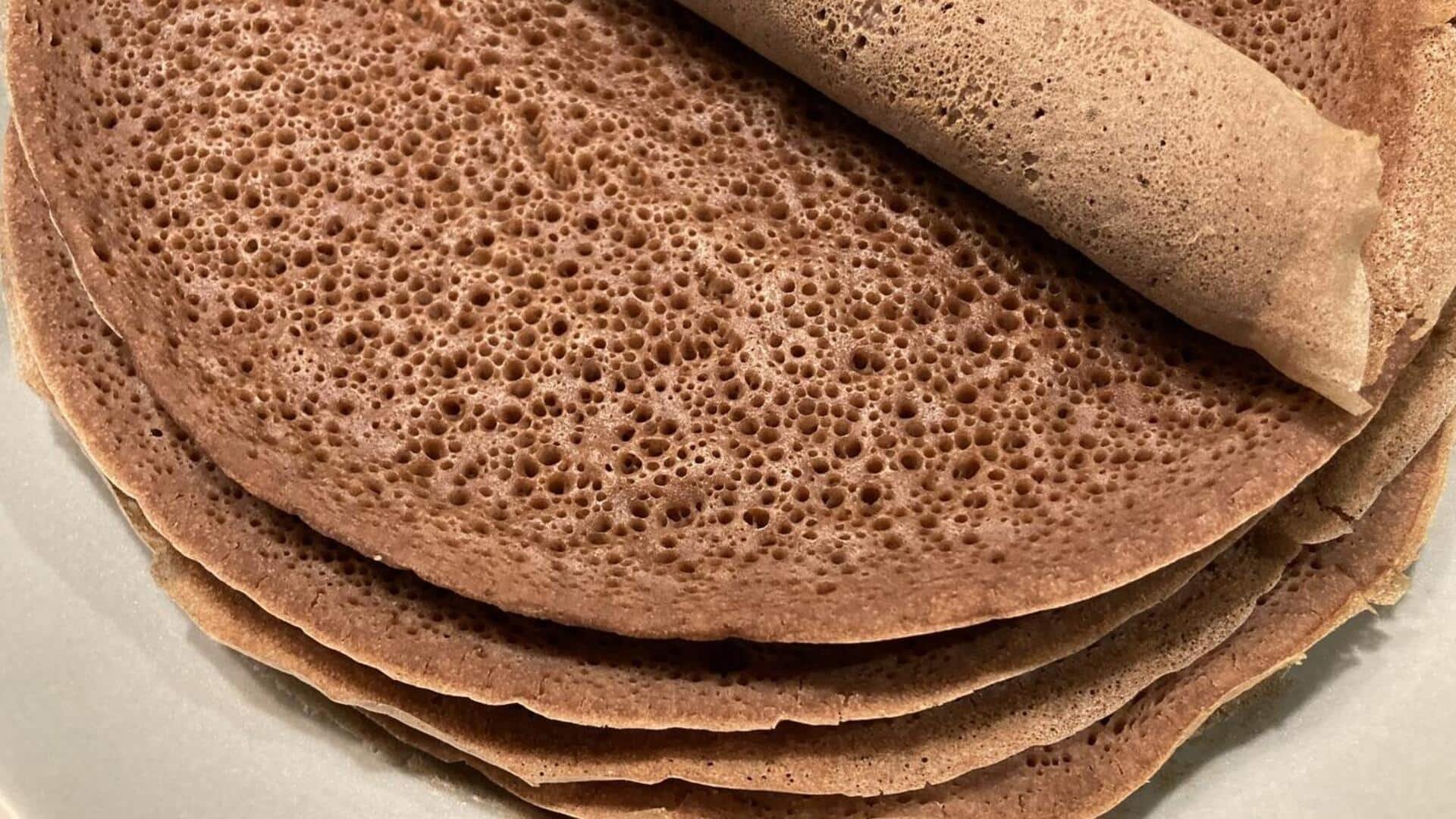
Ethiopian injera with vegetable stew guide
What's the story
Ethiopian injera with vegetable stew is a traditional dish from Ethiopia, deeply rooted in the nation's culture.
Injera, a sourdough-risen flatbread with a unique spongy texture, acts as both dish and utensil.
Accompanied by a hearty vegetable stew, it offers a blend of flavors and textures.
Ready to bring Ethiopia's culinary taste to your table? Let's start cooking.
Ingredients list
Gather the following ingredients
For the injera, you need two cups of teff flour, three cups water, and one-half teaspoon salt.
For the vegetable stew: one large onion (chopped), two cloves garlic (minced), one tablespoon ginger (minced), two carrots (sliced), one cup green beans (trimmed), one bell pepper (chopped), one cup cabbage (shredded), two tomatoes (diced), one teaspoon turmeric, salt to taste, and water as needed.
Step 1
Preparing the injera batter
In a large bowl, mix teff flour with water until smooth.
Cover this mixture loosely with a cloth and allow it to ferment at room temperature for one to three days.
This fermentation process gives the injera its distinctive sour flavor.
After fermentation, stir in half a teaspoon of salt into the batter, making it ready for cooking.
Step 2
Cooking the injera
Heat a non-stick pan over medium heat.
Pour about half a cup of batter onto the center of the pan; tilt it in circular motions to spread evenly into thin rounds.
Cook until holes form on the surface and edges lift from pan, about two to three minutes—no need to flip it over.
Remove carefully and repeat with remaining batter.
Step 3
Making vegetable stew
In a pot, saute onions until they're translucent. Add garlic and ginger, cooking for another minute.
Then, add carrots, green beans, bell pepper, cabbage, and tomatoes with turmeric and salt. Pour in water just to partially cover the vegetables.
Simmer until they are tender but not mushy, ensuring the vegetables cook evenly and maintain their texture.
Step four
Serving suggestions
To serve, lay an injera on each plate as a base then ladle generous amounts of vegetable stew over half of each injera round, leaving room on one side for scooping up stew using pieces torn from that side of injera itself—a traditional Ethiopian dining experience!
Enjoy this wholesome vegetarian meal that brings flavors from Ethiopia right into your home kitchen!